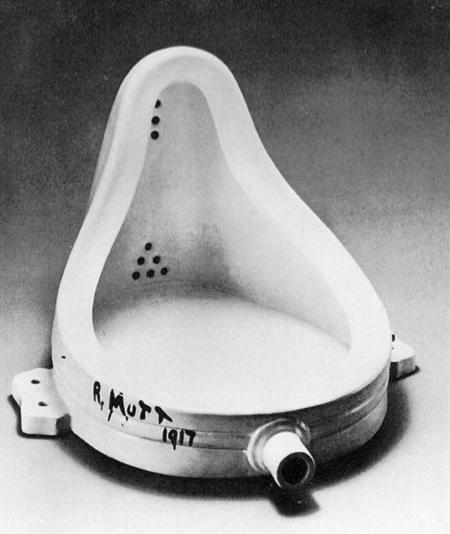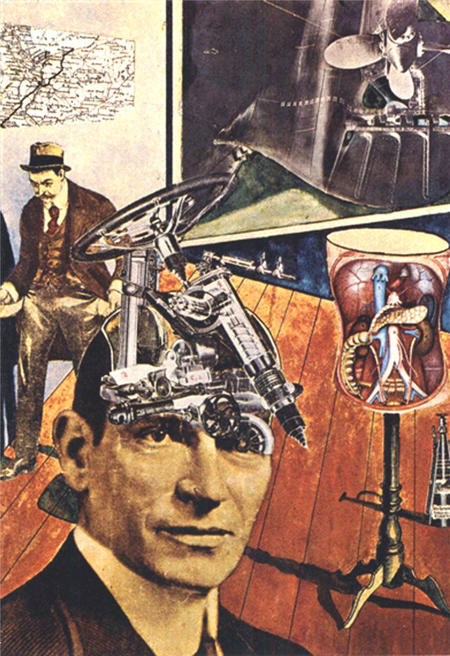


DADA
What is Dada?
‘Art is a parrot word and should be replaced by Dada’.
‘Musicians smash your instruments blind men take the stage’.
‘Art is a pretension warmed by the timidity of the urinary basin and the hysteria born in the studio’. Tristan Tzara.
Dada emerged in Zurich in Switzerland, during the First World War. It had very clear origins in Italian Futurism but unlike the latter, it advocated a totally non-rational approach to art and society. Unlike the Futurists, who, in a sense glorified war for its ability to ‘cleanse’, the Dadaists can be seen as anti-war. The difference between Marinetti who wrote the Futurist manifesto and the Dadaist’s leader Hugo Ball are considerable. Nevertheless, futuristic preoccupations and techniques found their way into Dada. Marinetti’s dictum, that ‘ every day we must spit on the altar to art ‘ must have met the approval of all Dadaists. The Dadaists shared with the Futurists the common desire to break completely with the society and art of the past. At least some Dadaists wanted to make a new art worthy of a new age.
Dada, is it Art?
It is important to understand that Dada was not really a style or even a movement in the accepted sense. In many ways the objects that Dadaists produced were not intended as works of art. Yet over the years as collectors and art historians have bestowed value on them. Dada was a gesture, an attempt to shock the society that took the world into war. To shake society out of its complacency and to re-examine the nature of art and the role of the artist. Two prominent examples of this type of work are:
- The notorious picture of the Mona Lisa with attached moustache
- Marcel Duchamp’s ‘Fountain’ (actually a urinal) which he sent to the New York Independents show in 1917.
Dada Artists
The individuals connected with Dada: Marcel Duchamp, Jean Arp, Francis Picabia, Hugo Ball were different in their attitudes and the work they produced. They were united more in spirit than in specific intentions. However, it is possible to identify two main trends in Dada. One advocated the replacement of existing values, both social and artistic with new ones that were more simple, anonymous, and engaged everyone. The other advocated an anarchic destruction, through ridicule, of all art and values, both new and old. The first strand developed into Surrealism and many of its advocates later became surrealist painters for example, Jean Arp, Max Ernst and Man Ray. The second strand drifted towards its logical conclusion namely non-art, anarchy and non-existence.
Perhaps nothing more adequately sets the context for Dadaism that this quote from Richard Huelsenbeck. ‘None of us had much appreciation for the kind of courage it takes to get shot for the idea of a nation which is at best a cartel of pelt merchants and profiteers in leather. At worst a cultural association of psychopaths, who like the Germans, marched off with a volume of Goethe in their knapsacks, to skewer Frenchmen and Russians on their bayonets.
Marcel Duchamp 1887 – 1968
Marcel Duchamp was a strong driving force behind Dadaist ideas. He can rightly claim to be one of the most influential artists of the 20th century. His influence can be seen in Pop art, Conceptual art, Performance art and Kinetic art. Some of his most important works include ‘ready mades’ and glass art. His goal as an artist was not only to be as original as possible, but not to repeat or rehash work or ideas he had already completed. He hated the concept of style, or of belonging to a stylistic movement. To him an artist was about ideas. Interestingly, when he reached middle age and his creativity waned he stopped creating art works and spent the rest of his life playing chess.
Paul Priestley – Artist in School
